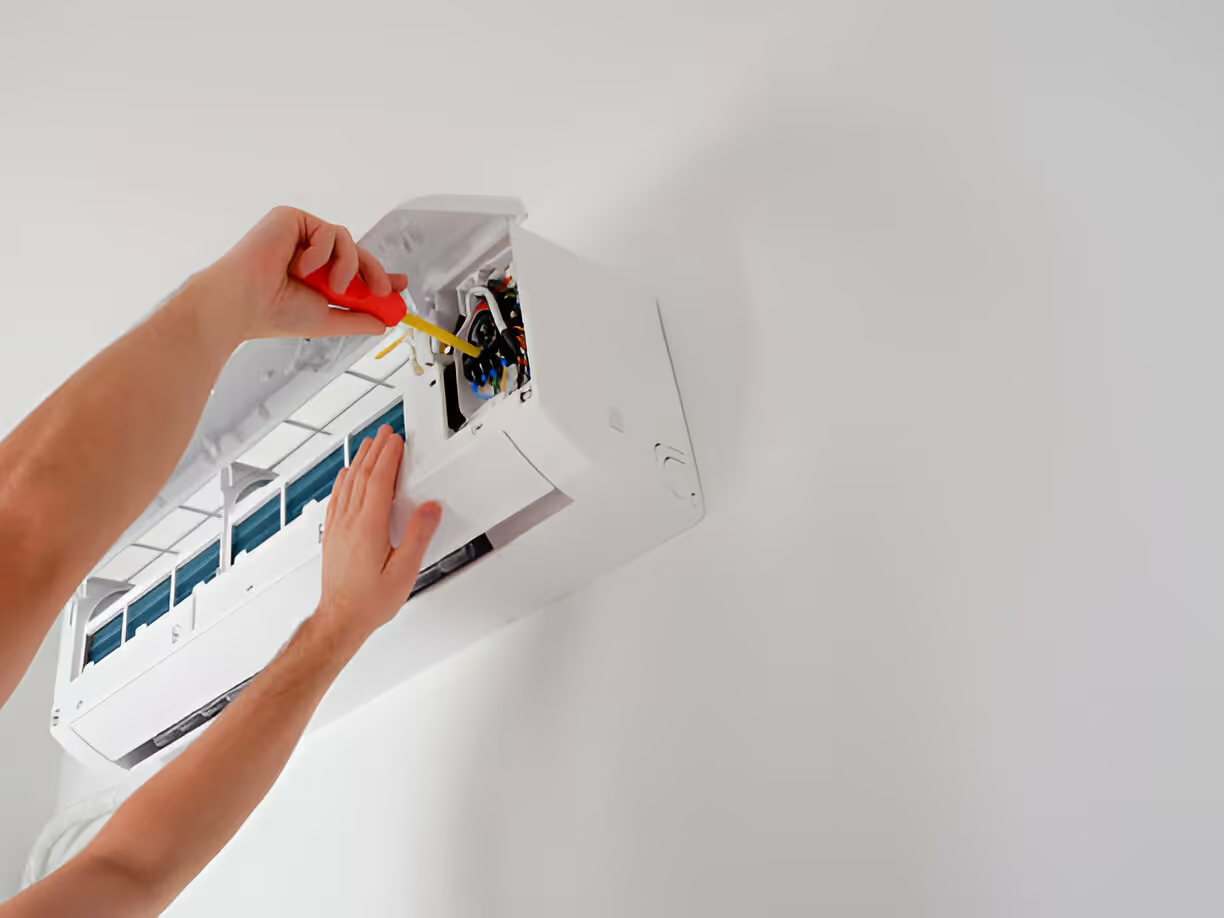Mini-Split Maintenance in St. Petersburg, FL


Why seasonal mini-split maintenance matters in St. Petersburg
- High humidity encourages mold and mildew growth on indoor coils and in condensate drains.
- Coastal salt air increases corrosion risk on outdoor units and electrical connections.
- Longer cooling seasons mean higher run-time and more wear on compressors and fans.
- Storms and power surges can damage electrical controls; preventive electrical checks reduce risk.
Routine, professional maintenance addresses these regional challenges before they become costly failures.
Common mini-split issues in St. Petersburg, FL
- Reduced cooling capacity or uneven temperatures across rooms.
- Frequent cycling, which raises energy use and shortens component life.
- Condensate overflow or water staining from blocked drains or damaged drain pans.
- Corroded outdoor coil fins and electrical terminals from salt exposure.
- Musty indoor odor or visible mold in drain lines and indoor units.
- Refrigerant leaks or low refrigerant that cause loss of cooling and possible compressor damage.
Recognizing these signs early and scheduling a tune-up prevents emergency repairs during peak heat.
What a seasonal mini-split tune-up includes
A thorough seasonal tune-up covers indoor and outdoor components and targets issues common to coastal Florida homes. Typical tasks performed by a trained technician:
Filter cleaning and replacement
- Clean washable filters or replace disposable filters. Recommend filter type and replacement frequency based on household needs and pollen/humidity levels.
- Indoor coil cleaning
- Remove surface dust and treat coils to inhibit mold. Deep-clean where necessary to restore airflow and efficiency.
- Condensate drain and trap inspection and cleaning
- Clear blockages, flush lines, and inspect drain pans for rust or damage to prevent leaks and microbial growth.
- Outdoor coil and fan cleaning
- Remove debris, rinse salt residue, and straighten bent fins to improve heat transfer.
- Refrigerant level checks and leak inspection
- Verify correct refrigerant charge; check for signs of leaks and recommend repairs if needed to protect the compressor.
Electrical safety checks
- Inspect wiring, connections, contactors, capacitors, and control boards for corrosion, wear, and secure connections. Test capacitors and contactors where applicable.
- Airflow measurement and system performance check
- Test airflow, static pressures, temperature split, and overall system capacity to identify inefficiencies.
- Operational and safety controls test
- Verify thermostat communication, safety cutouts, and reversing valve operation for heat pump models.
- Corrosion-prone component inspection
- Evaluate outdoor mounting, brackets, and refrigerant lines for salt-related deterioration; recommend protective measures if needed.
Diagnostic process: how technicians find and prioritize problems
Technicians follow a methodical process designed to diagnose current issues and prevent future failures:
- Visual system survey - identify obvious corrosion, debris, or damage.
- Filter/coil inspection - assess indoor air quality and airflow restrictions.
- Electrical and control tests - use meters to check voltages, current draw, and component health.
- Refrigerant and pressure checks - measure pressures and temperatures to determine refrigerant charge.
- Drain/condensate evaluation - run water through system to confirm free flow and check for microbial presence.
- Performance verification - measure supply/return temperatures, room comfort, and noise/vibration.
After diagnostics, the technician documents findings, prioritizes safety or performance repairs, and provides straightforward recommendations.
Service plan options (what to expect from each level)
Below are common maintenance plan tiers tailored for St. Petersburg homes. Pricing varies by system size and number of indoor heads.
Basic Tune-Up Plan
- Annual inspection, filter cleaning/replacement, basic coil and condenser cleaning, condensate check, and performance report.
- Standard Maintenance Plan
- Biannual service (pre-summer and post-summer), all Basic tasks plus refrigerant level check, electrical safety inspection, and priority scheduling for repairs.
Premium Care Plan
- Quarterly or biannual service depending on usage, full cleaning, corrosion inspection and protective recommendations, condensate treatment, system performance optimization, and documented maintenance history for warranty support.
- Add-ons and upgrades
- UV germicidal light installation, drain line treatments, surge protection for outdoor units, corrosion-resistant coatings, and refrigerant leak repairs.
How often to schedule maintenance in St. Petersburg
- Minimum: professional tune-up at least once per year for lightly used systems.
- Recommended for St. Petersburg: professional service at least twice per year - pre-summer (May) and late fall (November) - plus more frequent filter checks.
- High-use or high-humidity homes: consider quarterly visits or a Premium Care plan.
Timing visits before the hottest months prevents system overload and ensures efficient operation during peak demand.
Homeowner maintenance between professional visits
- Check and clean washable filters every 1-3 months; replace disposable filters as recommended.
- Keep outdoor unit area clear of plants, debris, and standing water. Rinse salt spray from outdoor coils after coastal storms.
- Monitor for reduced cooling, water leaks, or unusual noises and note when these began to report to your technician.
- Use a programmable or smart thermostat properly set to reduce constant run-times without sacrificing comfort.
What to expect during a professional visit
- Typical tune-up time: 60 to 90 minutes per indoor/outdoor pair, depending on condition and additional diagnostics.
- Technicians provide a written service report documenting findings, corrective actions taken, and recommended follow-ups.
- Safety-first approach: immediate concerns (electrical hazards, severe leaks) are addressed or isolated to prevent damage.
- Maintenance records can support warranty claims and provide a maintenance history that adds resale value to your home.
Regular mini-split maintenance in St. Petersburg, FL protects comfort and indoor air quality while reducing energy bills and costly emergency repairs. Choosing the right plan depends on system age, number of indoor heads, and how heavily you run your system through our humid, coastal climate. Routine, documented maintenance keeps systems running efficiently, prolongs equipment life, and helps you avoid inconvenient breakdowns during the hottest months.
Service Areas


